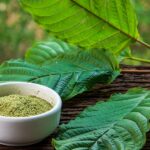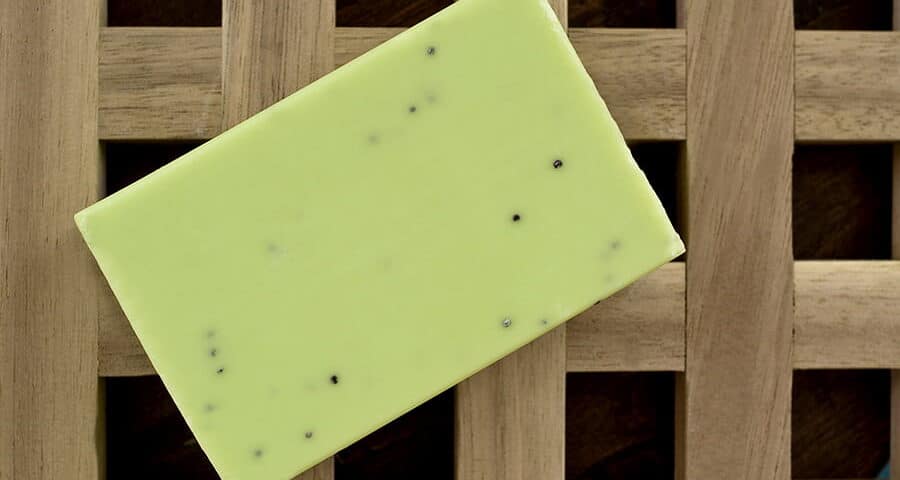
Red Kali Kratom Review: A Soothing Peaceful Strain
August 14, 2020
Top 5 Best Red Vein Kratom Strains to Get
August 28, 2020In recent years, topical kratom leaf products such as kratom soap have become more common in online herbal stores. That’s because kratom soap offers unique benefits. You can experience the beneficial properties of kratom as well as the effect of the powder texture and kratom alkaloids on the skin.
Additionally, natural homemade kratom soap reduces the exposure to harmful chemicals that commercially produced soaps tend to have. So, if you are looking for more natural skincare products, then kratom soap is an excellent way to reduce chemical products in your bathroom.
The best part… you can make kratom soap at home with a few simple ingredients.
Making your own kratom soap may be complicated the first time you do it. However, as you learn the procedure, it becomes easy. You may actually be able to enjoy it as a regular hobby.
What Equipment Do You Need to Make Kratom Soap
First of all, gather the tools and equipment you need to create kratom soap. Most of these, you will be able to continuously reuse. Here’s what you have to get:
- A scale to measure your ingredients. If you already have a digital scale to measure kratom powder, you should be able to use that.
- Two thermometers to measure the temperature of your mixture.
- Rubber gloves to protect your skin from lye spills and splashes.
- Safety glasses or goggles to protect your eyes from lye fumes and splashes.
- Towels, rags, or old newspapers to clean up spills and protect surfaces from them.
- White vinegar to neutralize lye spills and splashes.
- A big stainless steel pot.
- Glass jars or bowls to mix lye and water. If you have access to Pyrex glass, use that.
- Wooden spatulas to combine lye and water together.
- Boxes or silicone molds to make soap. You can use muffin trays to make individual kratom soap bars. Alternatively, you can use larger wooden or shoe boxes and make larger soap blocks which you can later cut up into smaller bars.
- Parchment paper to line your soap molds.
- Stick blender (optional) to stir faster and speed up the process.
- Sharp knife to cut the soap.
We advise that you reserve pots and other utensils exclusively to make kratom soap. Ensure that you only use stainless steel. Never use aluminum. It can react with the lye and produce hydrogen gas, which is highly flammable.
What Ingredients Do You Need?
To make approximately 4 large bars of kratom leaf soap, you need the following base ingredients:
- 80g of lye. Always make sure that you purchase 100% lye.
- 200g of purified or filtered water.
- 2-6 grams of kratom powder. More kratom will result in a grittier texture, making your soap more exfoliating.
- 500g extra virgin olive oil.
- 100g raw coconut oil.
Yet, you don’t have to stop here. Feel free to add any other herbal ingredients to add even more benefits to your kratom soap. You can try some of these ideas:
- Shea butter
- Essential oils such as lavender, orange, jasmine, or any other essential oil of your choice
- Orange or lemon zest
- Ground coffee or brown sugar
- Oatmeal
- Dried leaves or flowers such as chamomile, calendula, lavender, or more.
Feel free to include any additional ingredients that you find beneficial.
Which Kratom Should You Choose
While all kratom strains have beneficial properties, each type has its unique alkaloid content. Red vein strains, such as Red Bali, are soothing and relaxing. Meanwhile, green vein kratom is moderate and white kratom is energizing.
So, choose the type that you like most or are most likely to benefit from.
How to Make Kratom Soap at Home?
And finally, let’s get to the making process.
- Safety comes first. Lye is highly corrosive and can cause chemical burns and damage to tissues. So, lay towels, rags, or newspapers on the surface you are going to use. Next, get your safety goggles and rubber gloves on.
- Prepare the molds.
- Add water to a heat-resistant container such as a glass jar or bowl.
- Mix lye into the water. Fumes will produce during this process, so make sure the area is well-ventilated, and you don’t breathe in the fumes. Keep pets and children away, or do this outside if the weather permits it. Wearing a mask can also be beneficial.
- Allow the water and lye mixture to cool down.
- Then, mix the olive and coconut oils in glass recipients. Allow space for other ingredients.
- When the lye and water mixture is cool, add it to the oil mixture.
- Use wooden spoons or a stick blender to fold everything together. Be careful to prevent spills and splashes.
- When the mixture gains the consistency of mayonnaise, add kratom, essential oils, flowers, or any other ingredients you wish to use.
- Next, pour your liquid kratom soap mixture into the molds you have prepared.
- Set your soap aside to cool and harden for a minimum of 24 hours. Keep in mind that some soaps may take longer than a day to cure.
- Once your kratom soap is solid and hard, cut it into smaller bars. If it is still soft, set it aside for a few more hours. Make sure isn’t too long as the soap may become too hard to be easily cut.
How to Make Glycerin Kratom Soap
If lye seems intimidating, and you want to try something easier, you can craft kratom soap using a glycerin soap base. The procedure is more straightforward and requires less time.
Glycerin has many benefits for the skin. It moisturizes the outer layer of the skin and relieves dry skin. It can also help a wide range of skin conditions, such as psoriasis symptoms.
You can buy glycerin in craft shops or choose to make it yourself. To craft kratom soap using a glycerin soap base, follow these steps:
- Gather your supplies. You will need glycerin, rubbing alcohol, essential oils, kratom, and any botanicals of your choice. In addition to that, you will also need a double boiler, a spray bottle, a spatula, and molds. If you do not have a double boiler, you can use two pots, a bigger and a smaller one, instead.
- Chop up your glycerin and melt it using a double boiler.
- Once the glycerin has melted, add essential oils, kratom, and botanicals to it.
- Pour rubbing alcohol into the spray bottle.
- Place the molds on a flat surface covered with paper towels and mist the molds with alcohol. This will prevent bubbles from forming once your soap starts cooling down.
- Pour your soap into the molds.
- While the soap is still liquid, spray its surface with alcohol to prevent bubbles from forming on the top.
- Set your kratom soap aside to cure and remove it from the molds when it turns solid.
Precautions and Tips
Be cautious working with lye. If at any point it gets on any surfaces, use vinegar to neutralize and prevent damage. If, however, it gets on the skin, wash it off with plenty of running water.
Ensure that you always add lye to the water and do it slowly. Never add water to the lye. It can cause the lye to expand and erupt out of your container.
Experiment with different ingredients and enjoy. Let us know which ones you like best, and feel free to share your favorite recipe with our readers.
If you are shopping for fresh and high-quality kratom powder to make kratom soap, check out our strains. All our products come from trusted and traditional farmers in Indonesia. They have been in the craft for generations and only use sustainable and organic practices.
Every new batch we import, we test at a third-party independent laboratory to ensure the best possible quality and purity of our products.








